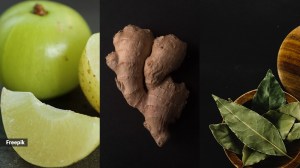A low carb,high fat diet to fight epilepsy
It's a diet that has high fat and low carbohydrate content,and ensures that one does not put on weight.
It’s a diet that has high fat and low carbohydrate content,and ensures that one does not put on weight. For several patients suffering from epilepsy,exposure to the ketogenic diet has not only been able to control innumerable seizures but in some cases has also proved to be a cure.
Epilepsy affects approximately one per cent of the population. In India with a population of over 1.2 billion,this translates to around 12 million or 120 lakh persons with epilepsy of whom 25 per cent (30 lakhs) are resistant to any medication and fall in the category of drug resistant epilepsy.
The ketogenic diet was scientifically introduced by Dr Howland of the Johns Hopkins Hospital,USA and Dr Wilder of Mayo Clinic in 1950s,says Mumbai-based neurologist Dr Janak Nathan,who is also the chief coordinator for Purple Day India.
March 26 is observed as Purple Day and Nathan has been coordinating with medical professionals and organisations to make the day as one of change for all those suffering from epilepsy.
Now,tailormade to suit Indian conditions,the ketogenic (KG) diet treats patients who have epilepsy that is difficult to control. Nathan,who underwent training at Johns Hopkins Hospital,introduced KG diet in India in 1996.
There was complete ignorance about the benefits of this diet not just among patients but among doctors as well, Nathan said.
Our centre in Mumbai has been treating 230 persons with the ketogenic diet that has now been changed so that the patient does not have to be hospitalised or undergo fasting.
The classical ketogenic diet replicates the effects of fasting by providing a high fat,low carbohydrate but normal protein diet. This forces the brain cells to use ketones for their daily energy needs and seizures among epileptic patients are brought under control. It was difficult and expensive for persons with epilepsy to get hospitalised or even adopt fasting as part of their diet, explains Nathan. The diet was then modified where the most difficult part that is fasting was eliminated.
In a mathematically-calculated doctor-supervised ketogenic diet that is a high-fat,adequate-protein,low-carbohydrate diet ,it mimics the aspects of starvation by forcing the body to burn fats rather than carbohydrates. Normally,the carbohydrates contained in food are converted into glucose,which is then transported around the body and is particularly important in fuelling brain function. However,if there is very little carbohydrate in the diet,the liver converts fat into fatty acids and ketone bodies.
The ketone bodies pass into the brain and replace glucose as an energy source. An elevated level of ketone bodies in the blood,a state known as ketosis,leads to a reduction in the frequency of epileptic seizures,says Nathan.
PURPLE DAY
Purple Day was founded in 2008 by nine-year-old Cassidy Megan of Nova Scotia,Canada,with the help of the Epilepsy Association of Nova Scotia. The day is an international grassroots effort dedicated to increasing awareness about epilepsy worldwide.
ON MARCH 26,people from around the globe are asked to wear purple and spread the word about epilepsy.
Lavender is the international colour for epilepsy. The lavender flower is also often associated with solitude,which is representative of the feelings of isolation felt by persons with epilepsy.
Epilepsy affects over 50 million people worldwide. Thats more than multiple sclerosis,cerebral palsy,muscular dystrophy and Parkinsons disease combined. In India,there are about 12 million people with epilepsy.
Photos


- 01
- 02
- 03
- 04
- 05




























